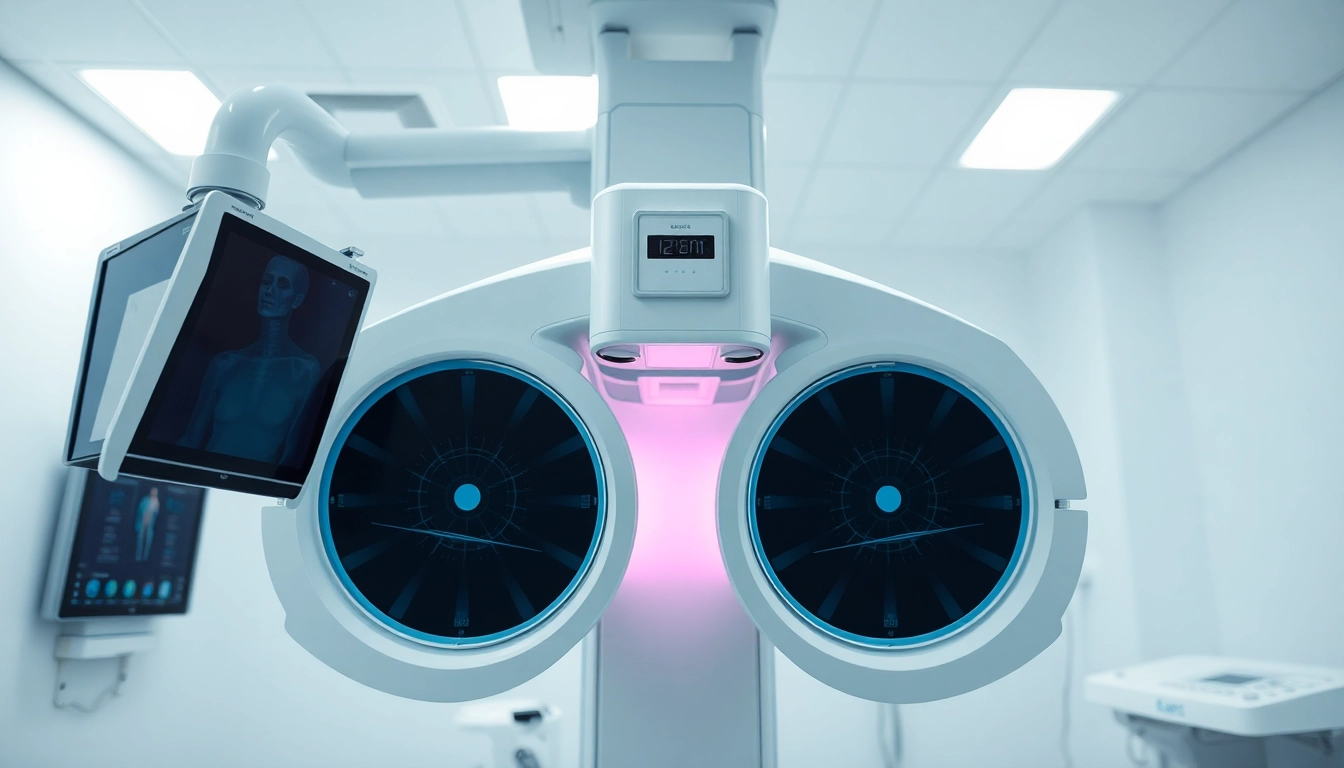
Understanding the Mobile X-ray System
What is a Mobile X-ray System?
A mobile x-ray system is a portable radiographic device that allows healthcare professionals to perform imaging examinations at the patient’s location rather than requiring them to go to a fixed imaging facility. This system consists of an x-ray generator and a digital imaging receptor, which can be wheeled to various locations, making it incredibly convenient for both patients and medical staff. With increasing demand for immediate diagnostics, mobile x-ray systems are becoming an essential tool in a variety of healthcare settings.
Key Components and Features
Mobile x-ray systems typically include several critical components:
- X-ray Generator: This is the powerhouse of the system, responsible for generating x-rays necessary for imaging.
- Digital Imaging Detector: A digital detector captures the x-ray image and converts it into digital data, allowing for enhanced image quality and easier access.
- Mobile Cart: The cart houses the generator, detector, and power supplies, making it easy to navigate through hospitals or homes.
- User Interface: A touchscreen interface allows healthcare professionals to operate the system intuitively, adjusting settings as necessary.
- Battery Pack: Many systems are equipped with rechargeable batteries, providing the necessary power to function without being tethered to an electrical outlet.
Benefits Over Traditional Systems
Mobile x-ray systems have several advantages over traditional fixed x-ray systems:
- Increased Accessibility: Patients who are bedridden or in remote locations can receive x-rays without needing to be transported, reducing the risk of complications.
- Reduced Turnaround Time: Instant imaging allows for quicker diagnosis and treatment, which is crucial in emergency scenarios.
- Enhanced Patient Comfort: Patients can remain in familiar surroundings, alleviating anxiety associated with moving to a traditional radiology department.
- Cost-Effectiveness: By minimizing patient transfers and streamlining workflows, healthcare facilities can reduce overall costs associated with imaging procedures.
Applications in Healthcare
Emergency Rooms and Trauma Centers
In emergency rooms and trauma centers, the speed of diagnosis is paramount. Mobile x-ray systems enable immediate imaging that can be critical for assessing injuries, diagnosing fractures, and guiding treatment decisions. For instance, in the case of trauma patients, rapid access to x-ray images can inform whether surgical intervention is necessary, ultimately saving lives and improving outcomes.
Home Healthcare Utilization
The rise of home healthcare has increased the demand for mobile x-ray systems. In home settings, healthcare providers can utilize these systems to monitor patients with chronic ailments or those recovering from surgery. For example, elderly patients living at home can receive necessary imaging without the risks associated with hospital transport, ensuring that care remains patient-centered and convenient.
Mobile X-ray System in Rural Areas
Rural healthcare facilities often struggle with limited access to imaging technologies due to geographic constraints and resource limitations. Mobile x-ray systems serve as an invaluable resource in these areas, bridging the gap in healthcare access. By deploying mobile x-ray units, healthcare systems can provide essential imaging services, enhancing both preventive care and acute care capabilities in these underserved communities.
Choosing the Right Mobile X-ray System
Factors to Consider When Selecting
When selecting a mobile x-ray system, several factors must be considered:
- Image Quality: Ensure that the system provides high-resolution images that meet diagnostic standards.
- Mobility: Assess the system’s weight and design to ensure it can be easily maneuvered in various settings.
- Battery Life: A robust battery life is critical for prolonged use, especially in locations where power sources are limited.
- Compatibility: Choose systems that easily integrate with existing hospital or clinic networks for smooth data transfer and imaging record management.
- Manufacturer Support: Look for suppliers that offer comprehensive training, maintenance services, and warranty options.
Top Manufacturers and Models
The mobile x-ray market is populated with numerous manufacturers known for their innovation and quality. Some of the leading brands include:
- GE Healthcare: Known for their high-quality imaging solutions, GE offers several models that provide exceptional performance.
- Carestream Health: Their mobile x-ray systems are renowned for their advanced digital capabilities.
- Siemens Healthineers: Combines cutting-edge imaging technology with practicality for diverse healthcare settings.
- Philips Healthcare: Offers models that emphasize image quality and user-friendly interfaces.
Cost Analysis and Budgeting
While investing in a mobile x-ray system offers numerous benefits, it’s crucial to conduct a thorough cost analysis:
- Initial Purchase Price: Consider not only the upfront cost but also financing options available.
- Operational Costs: Factor in maintenance, staffing, and power consumption as part of the ongoing expenses.
- Return on Investment (ROI): Evaluate how the system will enhance service efficiency and patient satisfaction, leading to potential revenue growth.
- Insurance Coverage: Investigate what types of expenditures are reimbursable through insurance to maximize affordability.
Best Practices for Operating Mobile X-ray Systems
Safety Protocols and Guidelines
Operating a mobile x-ray system requires strict adherence to safety protocols to protect both patients and healthcare professionals. Key protocols include:
- Lead Shielding: Use lead aprons or shielding to minimize radiation exposure to staff and patients not directly involved in the imaging process.
- Distance: Maintain appropriate distance from the x-ray beam during operation, as even small distances can significantly reduce exposure.
- Regular Safety Training: Conduct safety training sessions for all staff members who operate or assist with mobile x-ray systems.
- Patient Positioning: Ensure that patients are correctly positioned to obtain optimal images while minimizing exposure.
Training for Healthcare Professionals
Proper training is essential for the effective use of mobile x-ray systems. Training should encompass:
- Technical Operation: Hands-on training for using the system, adjusting imaging settings, and understanding readouts.
- Safety Protocols: Training on safety measures to protect staff and patients during operation.
- Interpretation Skills: Radiologic technologists should understand basic interpretation principles to assist in recognizing vital imaging outcomes.
Maintenance and Troubleshooting
Effective maintenance extends the lifespan and performance of a mobile x-ray system. Routine maintenance practices should include:
- Regular Calibration: Perform calibration to ensure accurate imaging results.
- System Cleanliness: Maintain a clean system to avoid dust and debris interfering with imaging quality.
- Monitoring for Wear and Tear: Regularly inspect components for signs of wear, addressing issues before they lead to system failure.
- Troubleshooting manuals: Keep user-friendly troubleshooting guides handy to assist operators in resolving common issues swiftly.
Future Trends in Mobile X-ray Technology
Advancements in Imaging Technology
The future of mobile x-ray systems is bright, with advancements in imaging technology set to revolutionize the field. Innovations include:
- Improved Image Resolution: New developments in detector technology are allowing for higher resolution images that facilitate better diagnostic accuracy.
- Faster Processing Times: Cutting-edge technology is enabling quicker data processing and image rendering, reducing waiting times for healthcare professionals and patients alike.
- Portable 3D Imaging: Advances in mobile x-ray technology may lead to portable 3D imaging capabilities, providing a more comprehensive view of internal structures.
Integration with Telemedicine
As telemedicine continues to grow, the integration of mobile x-ray systems with telemedicine platforms creates new opportunities for remote diagnostics. This evolution allows:
- Remote Consultations: Radiologists can review images in real-time, providing instant feedback and improving patient care.
- Data Sharing: Mobile x-ray systems can transmit images directly to telemedicine platforms, facilitating collaboration among healthcare providers.
- Enhanced Patient Follow-up: Telehealth appointments can be streamlined with available imaging data, ensuring continuity of care.
Impact of AI on Mobile X-ray Systems
Artificial intelligence (AI) is set to reshape the landscape of mobile x-ray systems. Key impacts include:
- Image Analysis: AI algorithms can aid in faster and more accurate interpretation of x-ray images, identifying conditions that might be missed by human eyes.
- Workflow Optimization: AI can streamline operations by predicting equipment needs and maintenance schedules, enhancing efficiency in patient throughput.
- Data Insight: Analyzing large datasets from mobile x-ray systems can uncover valuable insights into patterns of disease, ultimately informing better public health strategies.






